100 Fresh and Fun
Handmade Cards
Step-by-Step Instructions for 50 New Designs and 50 Amazing Alternatives by Kimber McGray


CINCINNATI, OHIO
www.createmixedmedia.com

Introduction
As we continue to live in a world in which birthdays are celebrated with a quick message on Facebook and gift cards are the go-to presents for every occasion, there is no better way to stand out from the crowd and show your friends and family how much you care than by creating and sending handmade cards. After writing
175 Fresh Card Ideas, I felt I wanted to take cardmaking a step further and create innovative ways to include gifts, gift cards and interactive components in a variety of fun, customizable cards suitable for almost any occasion. In this book you will learn how to make a great basic card and then youll learn how to turn it into an interactive card with parts that flip, fold, spin, shake, push, pull and pop up. Most of these cards use the same basic supplies, and wonderful stepped-out photos will help the beginner cardmaker create cards that look complex but are really quite simple. And I know time is tight. Sometimes all you need is a quick card for a friend to let her know you are thinking about her; youll find that here.
But sometimes you want to create a more interactive card to entertain and bring a smile to a loved ones face. Youll find that here, too. So bring out your inner child, play with some paper and see where your creative imagination takes you. Youll impress even yourself with the great cards you can make in minutes. 
Card Maker's Toolbox
Compared to the amount of materials necessary for some crafts, the supplies you need to make beautiful cards are relatively few. But within this basic list, including paper, punches and embellishments, your options are almost unlimited.
Add your fabulous imagination, and youll be making beautiful handmade cards in no time!
Papers
Paper can bring a lot to a design, whether it be whimsy, beauty or even structure. There are two types of paper youll need to made cards. Heavyweight cardstock is the base of your card design. The heavier weight cardstocks will hold up better to mailing and general handling than thinner weight paper like designer paper or patterned paper. Cardstock between 60 lb. (13gsm and 168gsm) will fold nicely and provide a strong base for your designs. (13gsm and 168gsm) will fold nicely and provide a strong base for your designs.
Anything heavier will be difficult to fold cleanly. Patterned papers can give your card its personality. There are so many different designs and styles that it can be a bit overwhelming at times. Just go with what you like and what fits the style of the cards you create. You cant go wrong.
Stamps and Inks
Stamps add a variety of figures, flourishes and words to your cards.
The inks you choose will depend on the colors and look you want. Rubber stamps are the most durable type of stamps and tend to produce the cleanest and sharpest images. Rubber stamps can come either premounted on a woodblock or unmounted, with or without a layer of foam. The foam is an important component of a clean-stamped image. If you purchase unmounted rubber stamps, you can buy foam to layer between the rubber stamp piece and the mounting block. Clear stamps have benefits and challenges.
Its much easier to see where you are placing your stamp image since you can see through the stamp. But clear stamps arent as durable as rubber stamps, and they need to be stored properly for the longest usage life. Store them on a smooth, nonporous surface to keep them clean. If they dont stick to the mounting block, you can wash them with mild soap and warm water and let them air-dry. All stamps should be stored out of direct heat and direct sunlight, as these elements can deteriorate the stamps. When it comes to inks for the stamps, you can find many types of inks and a wide variety of colors.
Here are some of the most basic categories.  Dye ink dries quickly and can absorb into the paper, depending on the brand. These inks come in a variety of colors. Read the labels carefully to find out if the ink you choose is waterproof or not. Pigment ink provides a more vibrant image. Because the ink sits on the surface of the paper, it dries more slowly, making it ideal for heat embossing.
Dye ink dries quickly and can absorb into the paper, depending on the brand. These inks come in a variety of colors. Read the labels carefully to find out if the ink you choose is waterproof or not. Pigment ink provides a more vibrant image. Because the ink sits on the surface of the paper, it dries more slowly, making it ideal for heat embossing.
Heat setting will help the ink dry more quickly. Chalk ink gives a softer, more blurred image. It is best used for coloring the edges of paper because it gives a soft, blended effect.
Embellishments
The key to embellishing cards is to keep the items you add light; heavy embellishments can bend the paper and create unwanted creases. The following embellishments can add a ton of visualsometimes even dimensionalpunch without weighing the card down.
Ribbons and trims offer endless choices.
While you can find many varieties in paper stores, check out your local fabric stores as well. Silk and grosgrain ribbons create beautiful bows, while twills and twines are great for masculine cards. Buttons are a nice flat embellishment to add to your card for a finishing touch. You can find buttons almost everywhere; paper stores and fabric stores carry nice selections. You can even salvage buttons from old clothing. Chipboard pieces come in all shapes and sizes.
They offer quick solutions for cardmakers who want to add dimension to their cards, and they are easy to decorate and match to card designs. You can also find predecorated chipboard shapes; look around and see if they inspire a card design. Embossed embellishments can add delicious texture to card designs. Dry embossing leaves an imprint on the paper, and it can be created a few different ways. A simple way is to use brass stencils and a stylus. Another option is to use one of the many new machines and tools on the market; these machines make it almost foolproof and offer a wide variety of designs.
Heat embossing creates a smooth, raised image. You need a few items to add heat embossing to a card. Youll need a stamp of your choosing, a pigment ink or an embossing ink, and embossing powder. A heat gun is used to melt the embossing powder into a smooth, raised image. Pens and markers can help add details and colors. Copic markers are increasingly being found in cardmakers toolboxes because they produce beautiful colors and shading, and they have a high archival qulity.
A basic sewing machine can do double duty securing elements to and decorating your cards with straight and zigzag stitches. If you dont have a basic sewing machine, you can hand stitch with a

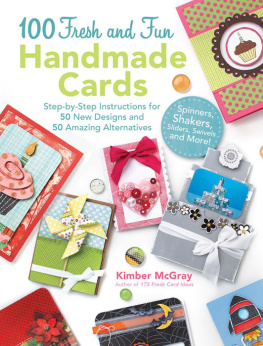
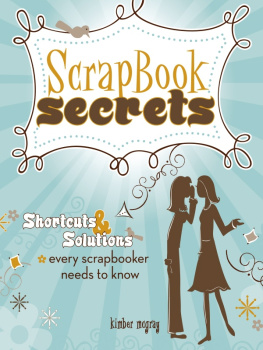
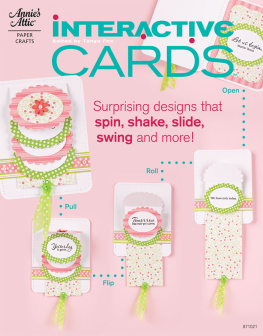
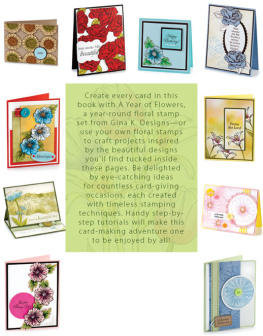
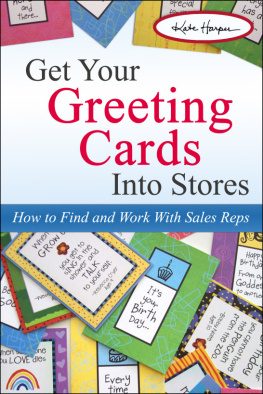

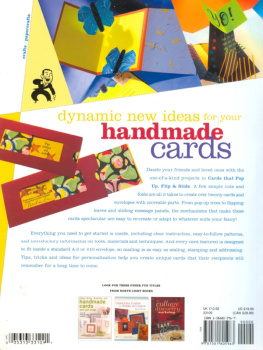
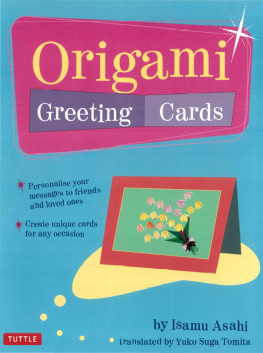


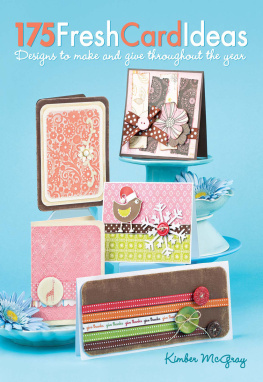
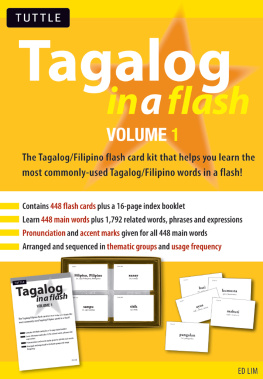
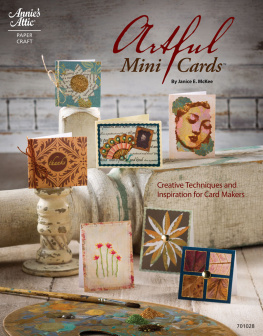
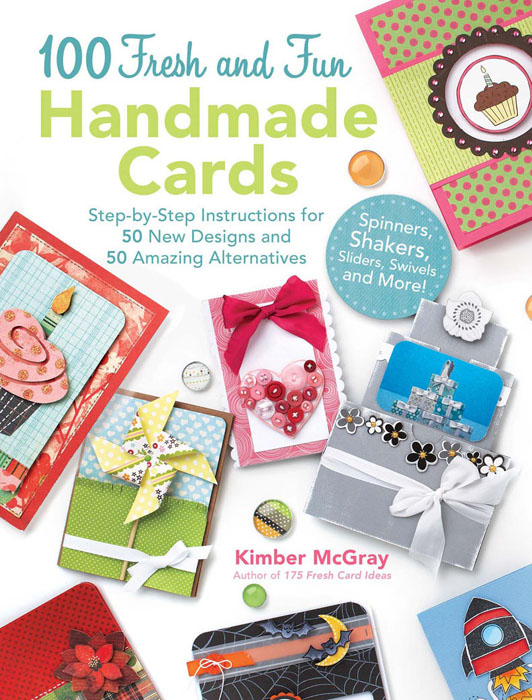




 Dye ink dries quickly and can absorb into the paper, depending on the brand. These inks come in a variety of colors. Read the labels carefully to find out if the ink you choose is waterproof or not. Pigment ink provides a more vibrant image. Because the ink sits on the surface of the paper, it dries more slowly, making it ideal for heat embossing.
Dye ink dries quickly and can absorb into the paper, depending on the brand. These inks come in a variety of colors. Read the labels carefully to find out if the ink you choose is waterproof or not. Pigment ink provides a more vibrant image. Because the ink sits on the surface of the paper, it dries more slowly, making it ideal for heat embossing.